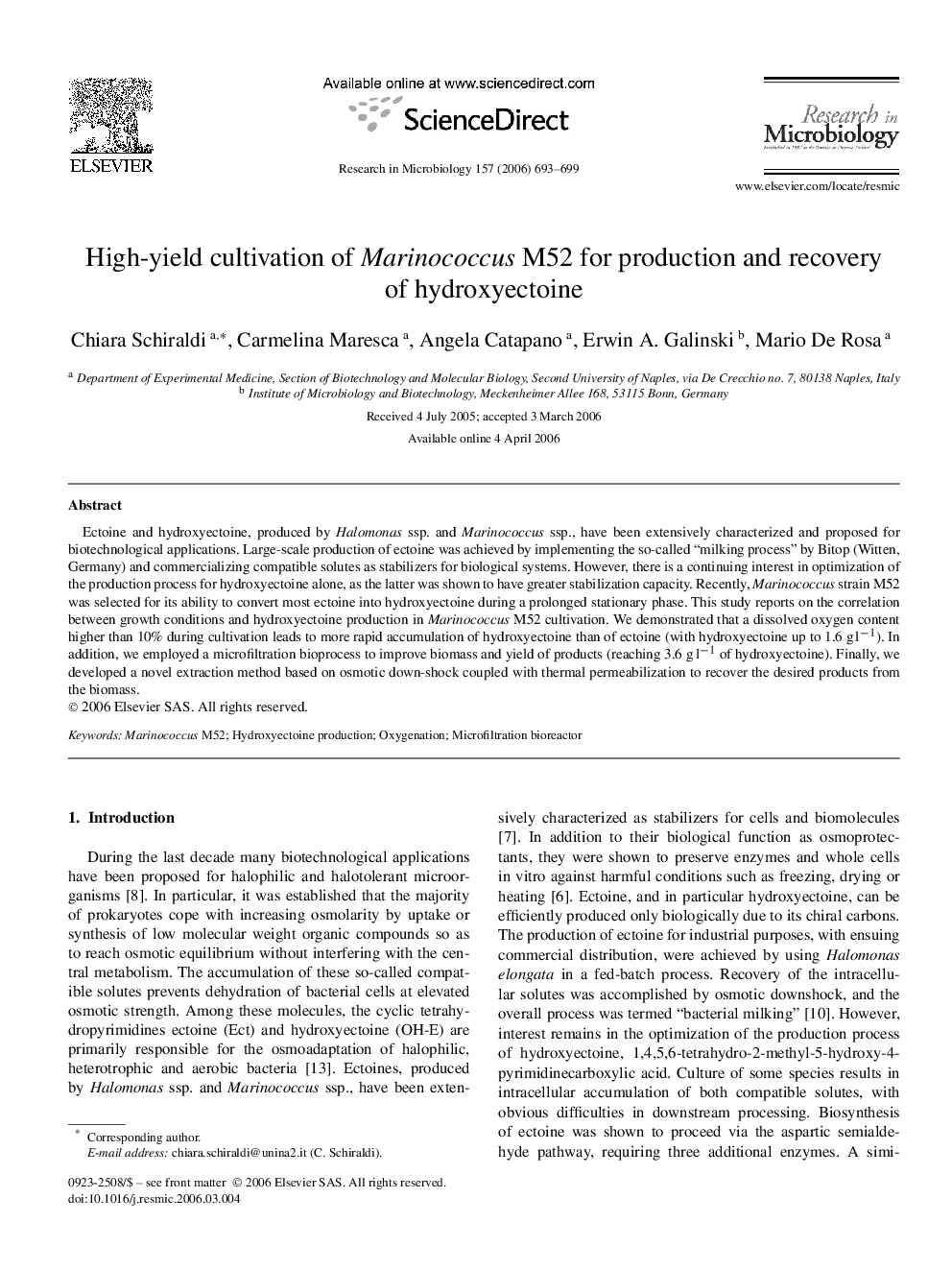| Article ID | Journal | Published Year | Pages | File Type |
|---|---|---|---|---|
| 4359564 | Research in Microbiology | 2006 | 7 Pages |
Ectoine and hydroxyectoine, produced by Halomonas ssp. and Marinococcus ssp., have been extensively characterized and proposed for biotechnological applications. Large-scale production of ectoine was achieved by implementing the so-called “milking process” by Bitop (Witten, Germany) and commercializing compatible solutes as stabilizers for biological systems. However, there is a continuing interest in optimization of the production process for hydroxyectoine alone, as the latter was shown to have greater stabilization capacity. Recently, Marinococcus strain M52 was selected for its ability to convert most ectoine into hydroxyectoine during a prolonged stationary phase. This study reports on the correlation between growth conditions and hydroxyectoine production in Marinococcus M52 cultivation. We demonstrated that a dissolved oxygen content higher than 10% during cultivation leads to more rapid accumulation of hydroxyectoine than of ectoine (with hydroxyectoine up to 1.6 g l−1). In addition, we employed a microfiltration bioprocess to improve biomass and yield of products (reaching 3.6 g l−1 of hydroxyectoine). Finally, we developed a novel extraction method based on osmotic down-shock coupled with thermal permeabilization to recover the desired products from the biomass.
